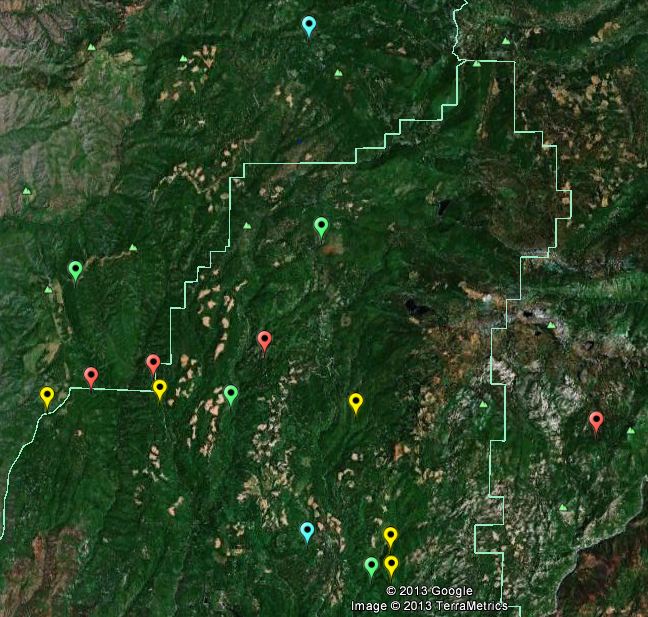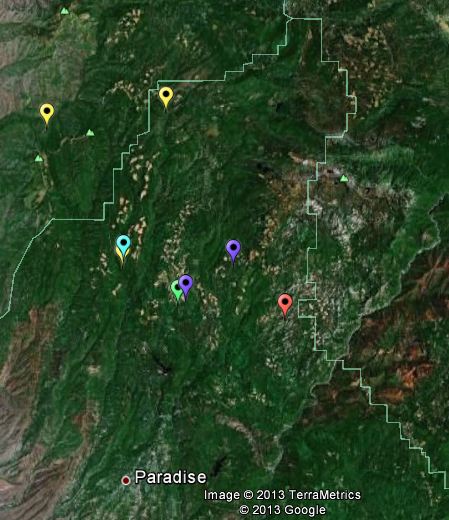Okay, so maybe love isn’t the best choice of words.
The other day I was searching for the natal den of one of our trans-located females. Having narrowed the signal down, I thought I knew where I needed to go in order to find her. As I was riding on the ATV past an old road, I caught a “fisher log” out of the corner of my eye. Now I often see fisher shaped rocks and logs, and 99 times out of 100 they are just that. This time however, as I backed up to get another look, this particular log turned around and loped off!
I quickly grabbed my gear and started walking after the fisher, thinking it was probably the female I was looking for. As I walked a ways down the road I realized that although I was extremely close to the female, her signal indicated that she was not moving. Just then, one of the Argos collared males appeared and started to approach me! He got about 15 feet away, then moved up-slope towards a large tanoak. After sniffing around the base of the tree for a few seconds he slowly walked off. Not surprisingly, this turned out to be the tree the female was in! This was the first time I have personally spotted a male at a den (although it isn’t too uncommon among the field crew, and our cameras detect it frequently). It was certainly nice of him to lead me to the tree she was in.
The spring denning time coincides with the breeding season for fishers. For us on the ground, it is probably one of the best opportunities to spot the males out in the woods. Males are busy seeking out the females, and just like in this case, often end up at their dens. I put up a camera pointing at the tree, and it caught a cool series of pictures.
The male in the picture is not the male that led me to the den. He is un-collared, and appears to be quite a bit smaller than the one I saw there. It wouldn’t surprise me to catch some larger males visiting the den in the next few days. This particular female has been in the same tree for a few days now, indicating this this is probably her den. We are starting to see many of the females we are tracking settling into denning behavior, but more on this in a few days!






